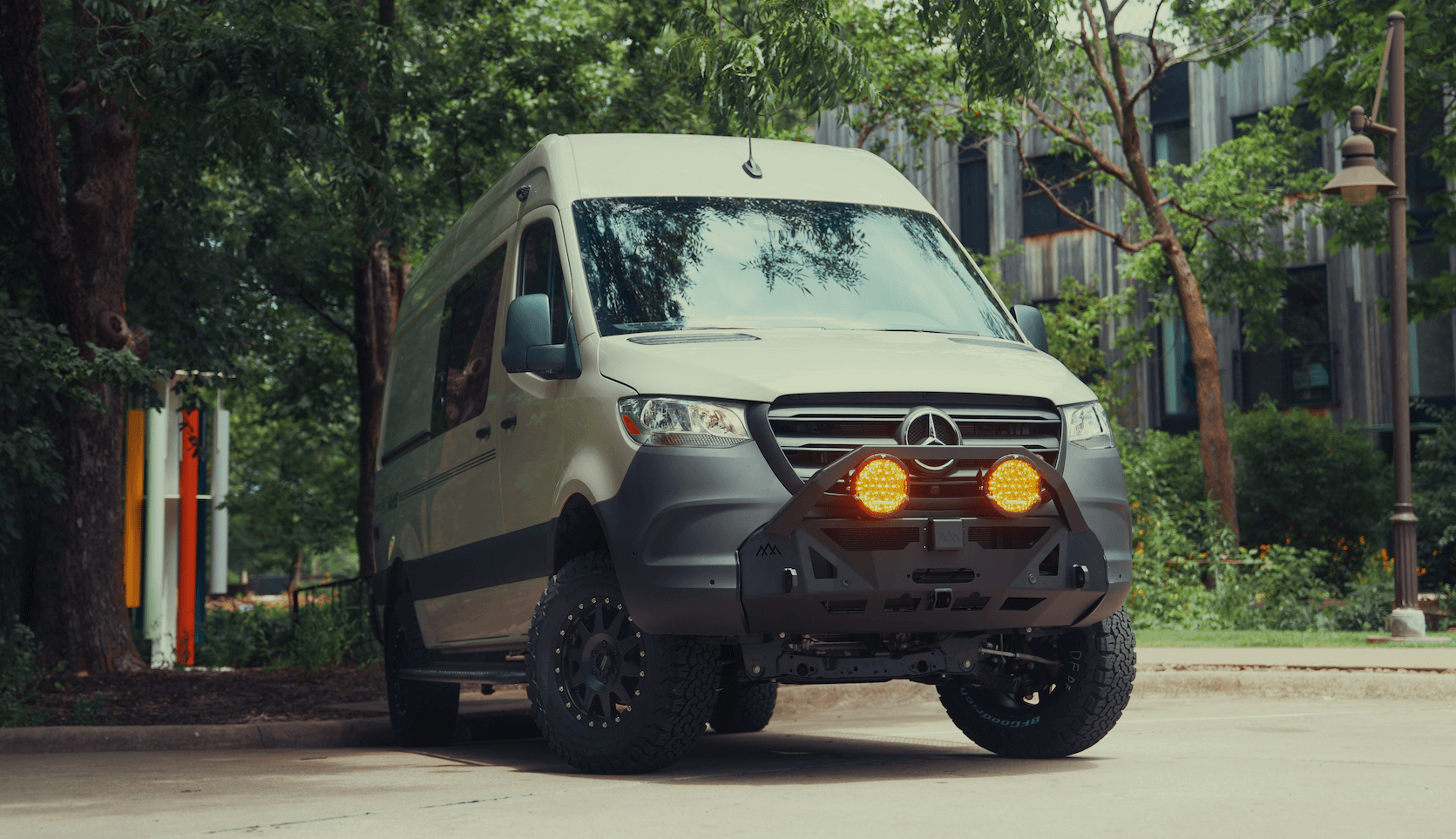Recreational Vans

Choosing between a lithium vs AGM battery starts with chemistry. AGM is a sealed lead acid type that uses absorbent glass mat separators, which makes it spill resistant and low maintenance. Lithium for van use is most often lithium iron phosphate, known as LFP, which pairs light weight with high cycle life and stable behavior.
AGM batteries prefer shallow discharge. Plan on about fifty percent usable capacity to protect lifespan. A one hundred amp hour AGM often yields about fifty amp hours in daily use. LFP commonly allows eighty to one hundred percent depth of discharge, so a one hundred amp hour pack can deliver eighty to one hundred amp hours without accelerated wear. More usable energy per pound is the real world advantage.
AGM accepts lower charge rates and has higher internal resistance as state of charge rises. It tapers early and wastes more energy as heat. Lithium takes higher charge currents, maintains absorption longer, and returns to full faster when fed by alternator, solar, or shore power. Round trip efficiency for LFP often exceeds ninety five percent, while AGM lands closer to eighty to eighty five percent.
A quality AGM may offer three hundred to five hundred cycles at fifty percent depth of discharge. LFP can exceed three thousand cycles at eighty percent depth of discharge. When you divide total cost by usable watt hours over its life, lithium frequently wins even with a higher purchase price.
Numbers tell part of the story. Daily use in a moving home adds variables like temperature, vibration, charging sources, and safety protocols.
Lithium delivers more energy with less mass. Compared to AGM, you can cut weight roughly in half for the same usable capacity. Less weight improves handling, braking, and fuel economy, and frees payload for water, gear, or bikes.
AGM can charge in freezing temperatures, though capacity drops as it gets colder. Many LFP batteries should not be charged below freezing unless they have internal heaters or a charge inhibition feature. In hot conditions, both chemistries degrade faster, but LFP typically maintains superior cycle life. A battery management system that monitors temperature is key with lithium.
AGM is simple. No active electronics are required, but overcharging can cause venting and shortened life. LFP requires a battery management system to control cell balancing, temperature, and current. A quality BMS provides shutoffs that protect the pack and your rig. For both chemistries, proper fusing, cable sizing, ventilation considerations, and secure mounting are non negotiable.
Your charging mix has a direct impact on the best battery choice and how large the bank should be.
System sizing starts with a daily energy audit. List devices, watts, and hours of use to estimate amp hours. Then decide on reserve days and target depth of discharge. Example planning: a daily need of eighty amp hours suggests about one hundred sixty amp hours of AGM or one hundred amp hours of LFP to stay within the preferred discharge window.
Upfront price favors AGM. Ongoing cost tilts toward lithium as usage increases.
Power systems are only as good as the design, installation, and testing behind them. Our team builds electrical layouts that match your lifestyle, not a spec sheet. If you want a fully integrated travel rig, explore our recreational vans. Ready for a tailored layout with solar, DC to DC charging, inverter selection, and battery protection tuned to your needs, start a custom van build. If you prefer a platform that finances and can be upfitted for future growth, review our mainstream vans.
Start with your daily energy use, climate, and charging sources. Lithium vs AGM battery is not a one size answer. With a clear plan, either chemistry can deliver dependable power. If you want a system that just works every time you hit the starter, we will build it that way and stand behind it.
Share your travel goals, must run devices, and trip length. We will design and install a safe, efficient power system that fits your budget and future plans.
Ready to spec the right battery system for your build. Tell us how you travel and what you power, and our team will design a safe, efficient system that fits your budget and future plans. Start your custom power plan now.
ADDRESS:
6159 E Huntsville Rd, Fayetteville, AR 72701
PHONE:
(479) 326-9200
EMAIL:
info@ozkvans.com